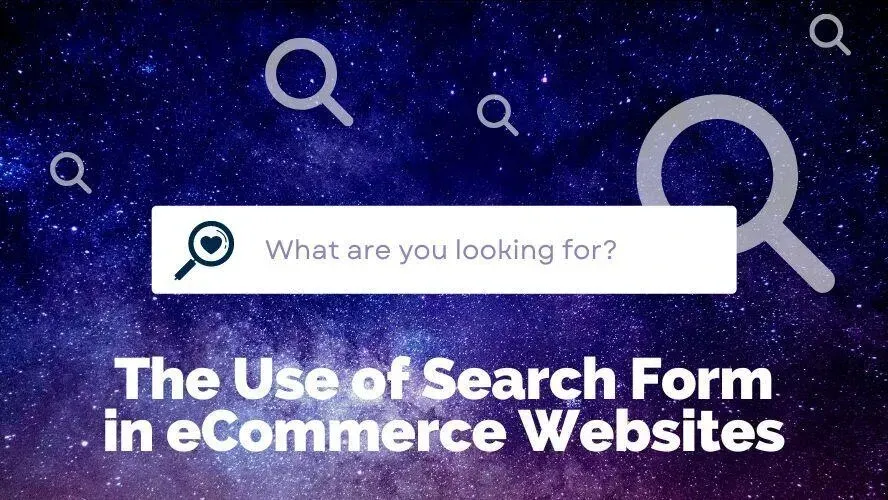Customers rely heavily on the site search, which may make their purchasing experience excellent or bad. Those customer users who cannot discover the information they require may leave the site dissatisfied.
What is a Search Form and How Does it Work?
A site search can work as an integrated search engine that matches terms or keywords to assist consumers to find the specific goods they're looking for on your e-commerce website. However, the use and its function are more complex than just a search tool.
It can provide metrics to analyze consumers' demand and behavior within a search result, specifically over products or services provided on an online shop or marketplace. More of that we will discuss in a few steps in this article.
The Importance of Search Form
The most significant component of online purchasing, according to 61% of consumers, is easy search and navigation. It makes very good reasons for e-commerce shops to take this statistic data seriously as they grow their business and add more products to their online shops.
Before making a significant purchase, 66% of consumers will also do online research on the products they plan to buy either online or in-store. They will spend time reading product reviews to make sure that they’re making the right decision.
Types of Search Forms
There are some common types of search forms we usually found on e-commerce websites. Here they are with related examples:
1. Auto-suggest search forms
This type of search form will reduce misspelled by the web visitors, especially those who browse products from mobile devices. It will also speed up a search result as it shows suggested products instantly.
Often auto-suggest search forms include product thumbnails for a better search result.
Using this technique would also give visitors more ideas about what to search for as well as to encourage visitors to view more products.
Combining all of those mentioned benefits it is clearly understood that auto-suggest search will ensure customers that their searches will return a product result to apply to any scale of e-commerce websites.
- CreativeFabrica
Is not only using auto-suggest text but also a thumbnail preview of the product.
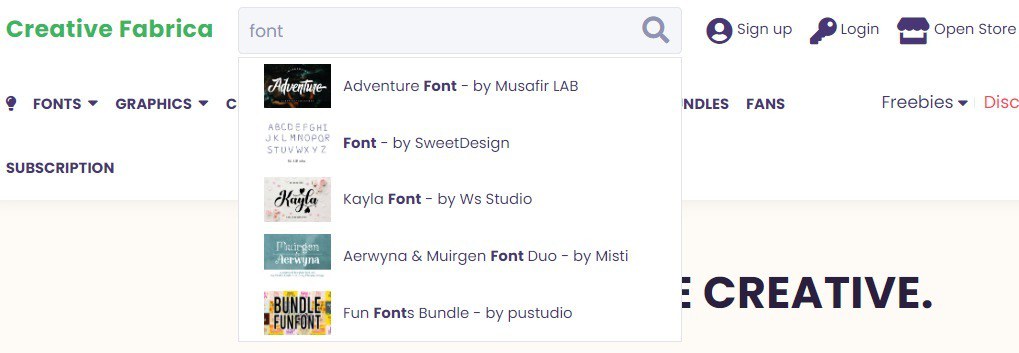
- Book Depository
Displays not only the book cover’s thumbnail in the auto-suggest list but also the popular search text category that helps prospect buyers with several more options.
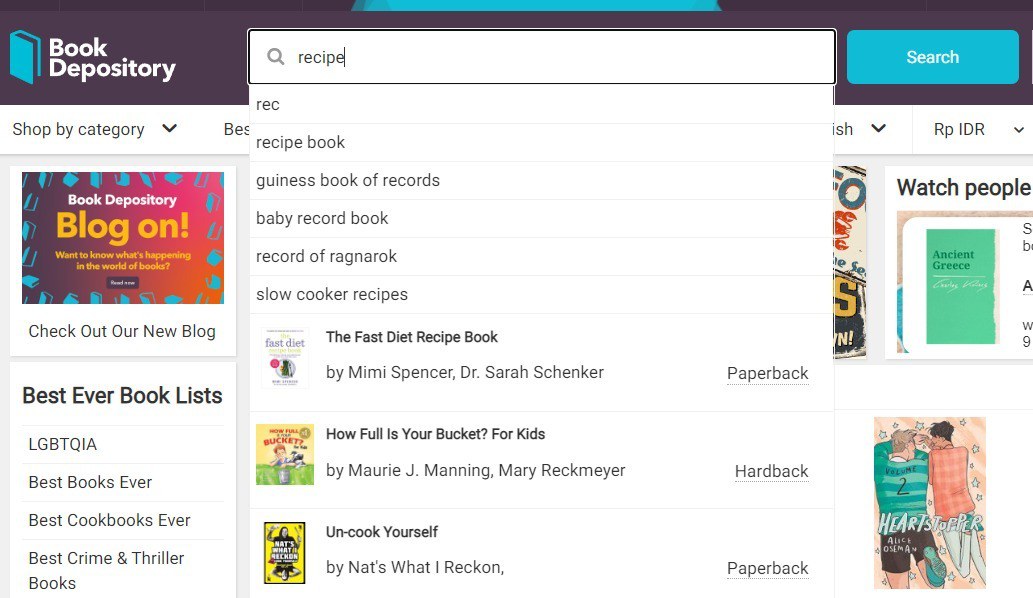
2. Search form with dropdown category or faceted classification filters
A drop-down product category would be perfect for a marketplace that has several main product types. Customers will have a direct initial option to limit the search results.
This method will also help visitors to stay focused on the search for what product they need especially if the online shop has plenty of product types to choose from.
- CreativeMarket
Uses this method side by side with the use of auto-suggest in their search form, which significantly speeds up the search process of a wide range of digital product types.

3. Search form with advanced filters
As time passed, often a marketplace website grow big. The offered services or products become more complex. This is the time when the e-commerce website is highly suggested to use search forms with advanced multiple filters for their prospective buyers.
The search process can have multiple steps or use the search filters that have plenty of options to refine the search result in the second step.
The filter parameters are normally the product price or budget, product characteristics (colors, sizes, variations, types, materials, and styles), location, ratings, product brands, specific functions, and many more depending on what e-commerce website you maintain.
Use of Search Form: Study Cases
Depending on what to offer on e-commerce websites, a search box is a must-have. But to get a better understanding of what to focus on in different types of e-commerce websites, let’s check on these short lists of study cases of the use of search forms.
Nordstrom
Nordstrom's site search looks pretty straightforward as it provides product physical characteristic filters for their potential buyers' online shopping experience. The hierarchy of the search filters is well arranged in the sidebar, as what comes in the first group of filters is the size and color of the footwear.
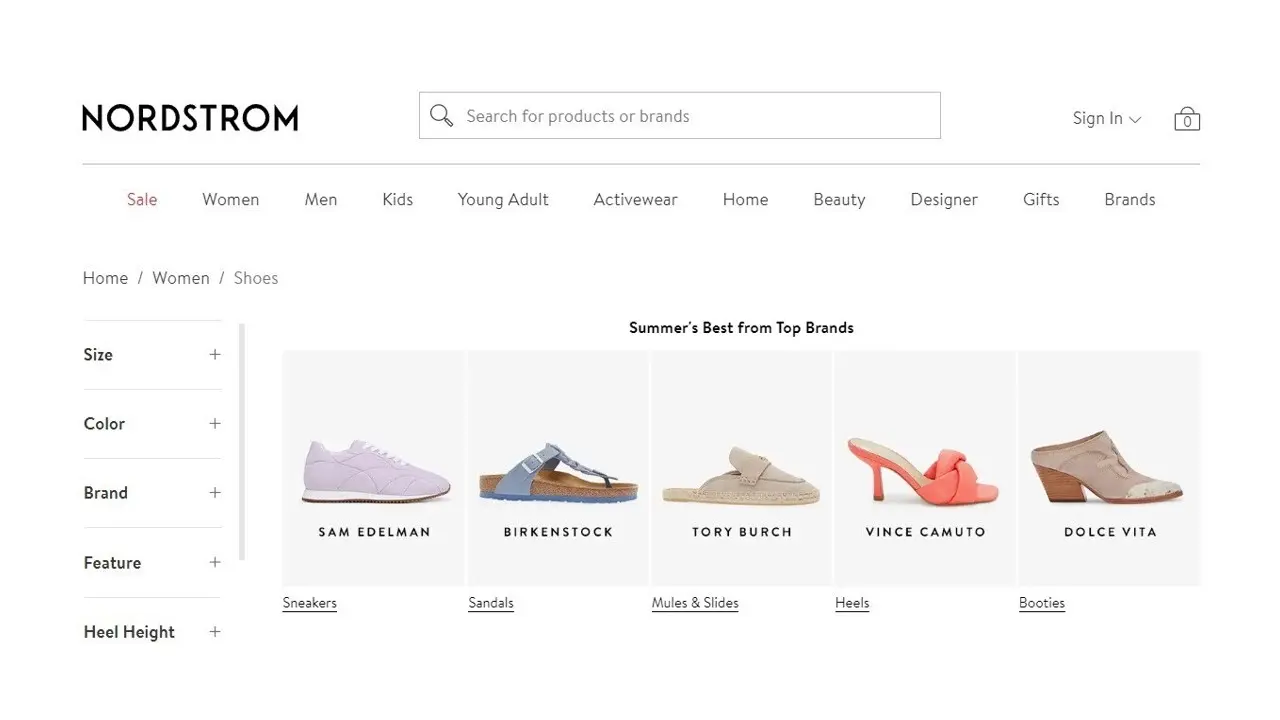
Fiverr
Fiverr is a very big job marketplace that connects service providers and project owners. Each provided service type will surely have relevant parameters to present. Fiverr uses complex search filters for this requirement.
We can also see the suggested relevant group of categories listed horizontally before the search result.
The seller details and performance are included in the filter options since they are also crucial factors to consider for the prospect buyer besides the project budget.
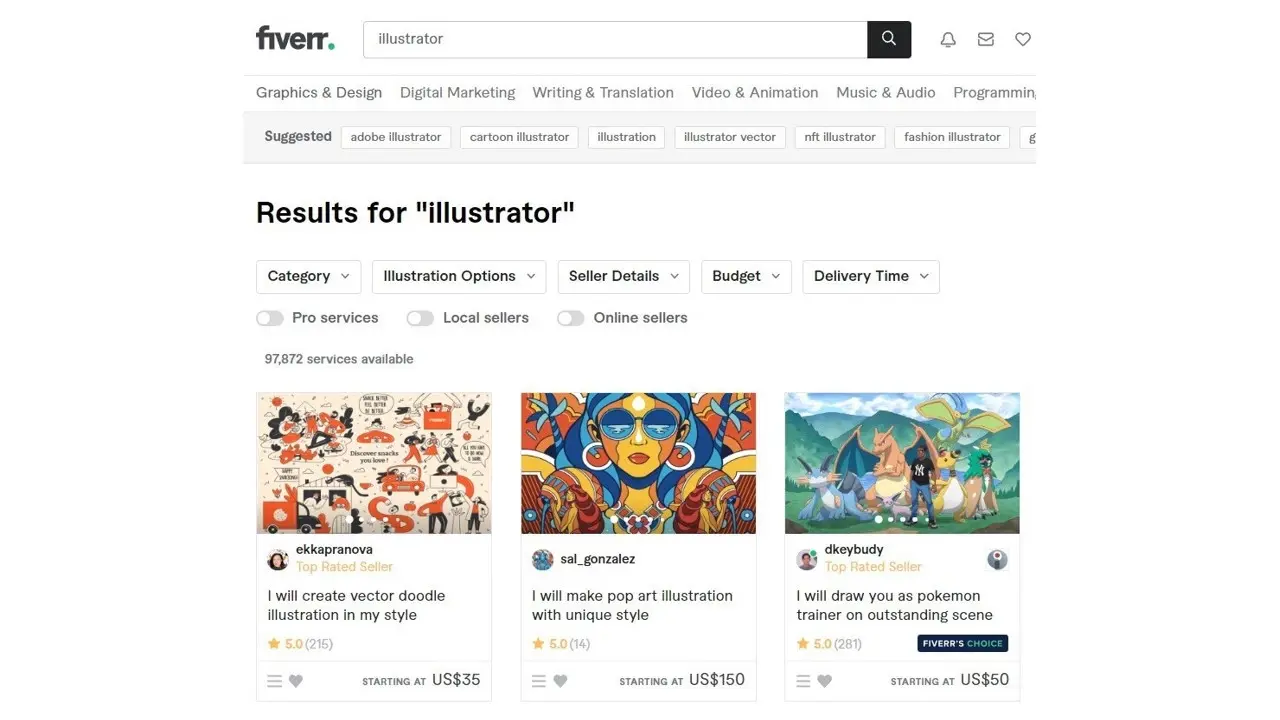
Airbnb
Airbnb is a hospitality-related e-commerce website. Its search form focuses on the location search and booking system. The design looks more interactive and accessible with the map thumbnails to search the location or destination.
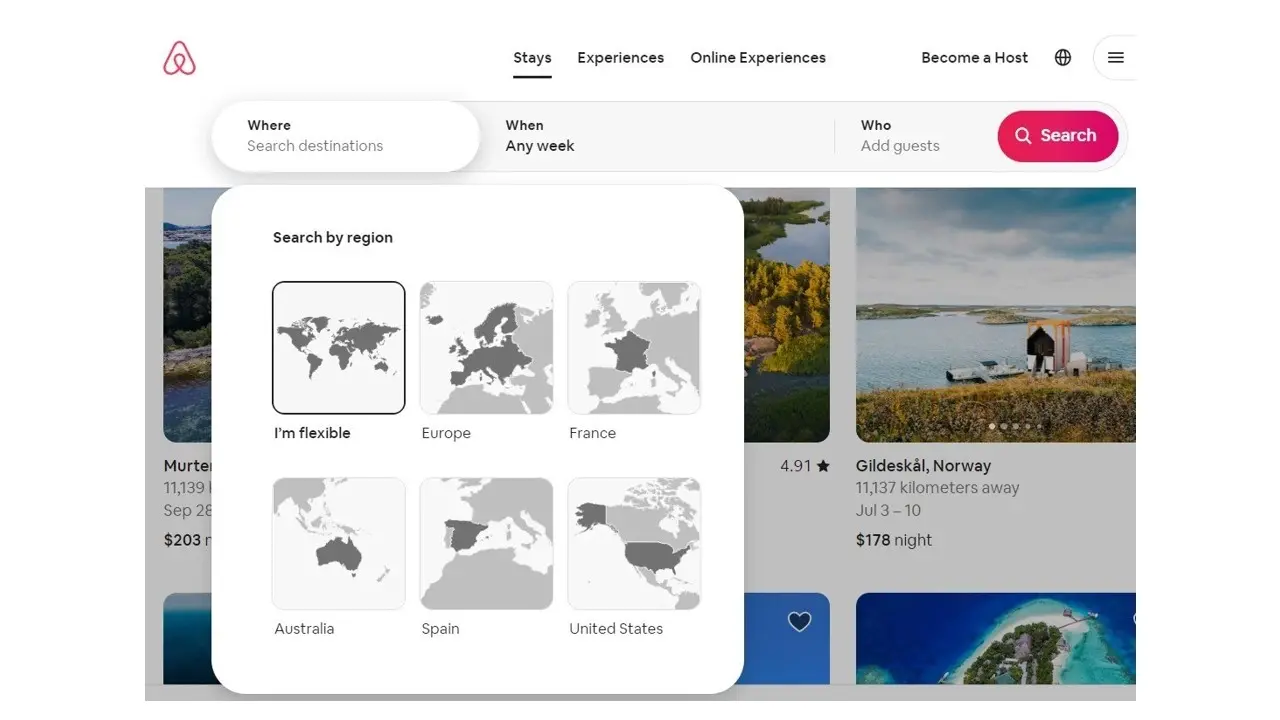
Apartements.com
As in the property online service, Apartments.com provides a nice example of a search form. At the second search step after imputing a location, a visitor will see more filters that are related to renting an apartment.
Of course, price to indicate the budget range will still be important to include in the search filter, however, this e-commerce website also provides beds, baths, and specific amenities at the right sidebar to speed up the search.
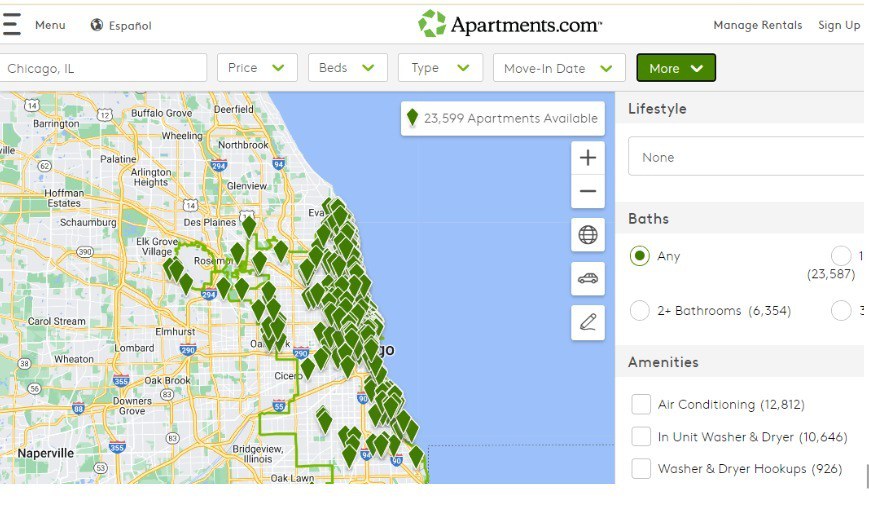
Search Form Components to Consider

Usability

Design

Visibility

Performance
Usability
Ecommerce websites may help consumers discover what they're seeking more quickly by providing a user-friendly site search experience. This gives visitors control over their buying experience.
This positive experience, accessibility, and familiarity with the site search will also increase consumer loyalty and makes them more likely to buy products and return to the site for more purchases.
For a nice example of this usability component, let's take a look closer at Disney Store’s site search:

The search bar is more noticeable with particular color and design, and it is also easy to access on mobile devices. The added placeholder text is there to visually direct visitors to use the search functionality.
There’s also a visual icon of a magnifying glass which is widely understood as referring to a search box.
Design
Customers will also be able to locate products more quickly if the site search is effectively designed. This can lead to increased sales since customers who find what they are looking for easily are more inclined to buy.
A good example can be the Fat Brain Toys search form box which comes up with a lighter background to add better contrast with the inputted text and not confuse it with a shape of a button.
This method also creates good contrast of the search box with the web background-color

Visibility
It is also important to pick the best location of a search form in a website that would be effective enough to gain the attention of the web visitors.
The best-suggested position of the search box on a website homepage is normally placed in the header area. Threadless puts a search box next to the web logo, which is easy to access and find.

Another way to put a search box would be at the center of the page, undistracted from other web content. A good example of this method is what you can see on the Zillow homepage.
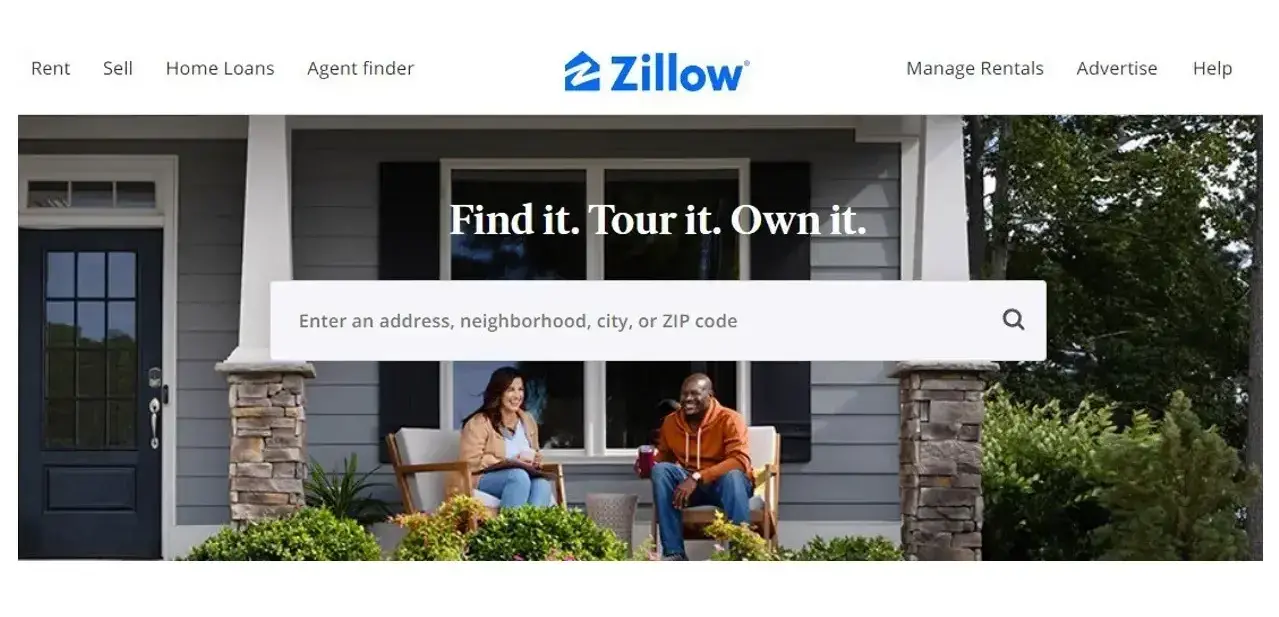
This technique has the main intention to lead the web visitor to just go search the web content for products or services before everything else.
The next example of a good web search box location is in the hero section of a web page. It could also have a simple filtering option to start with the search, like what you can see on the Canva homepage.
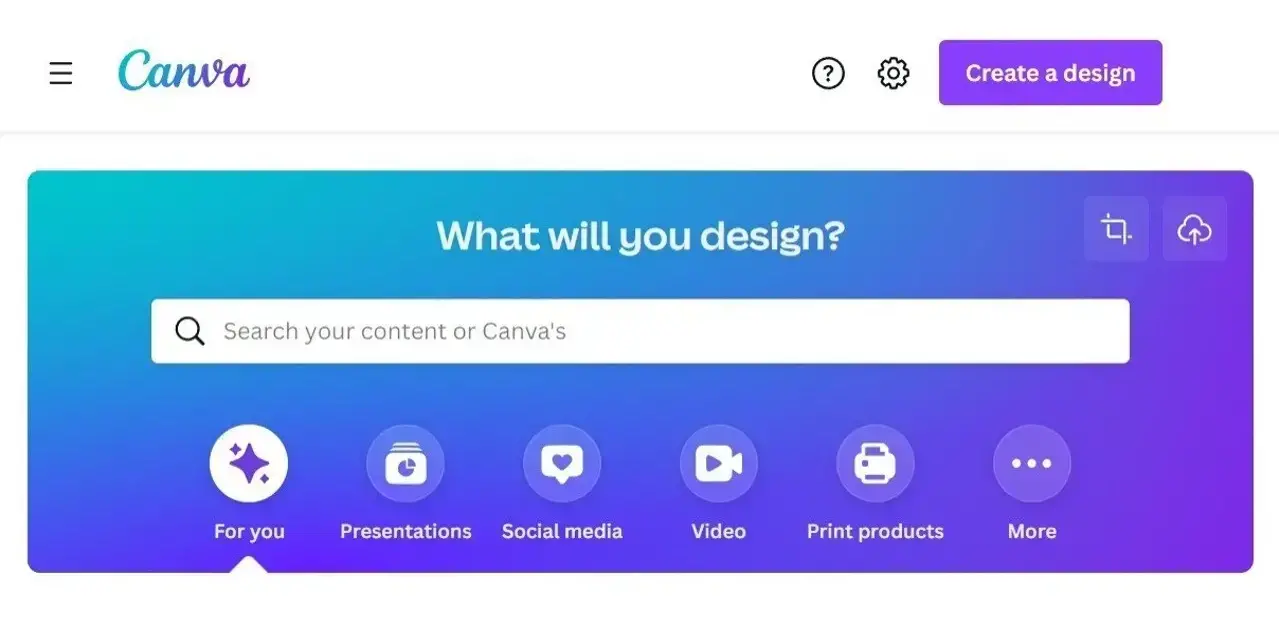
Performance
Site search performance matters despite the design interface. What are these search performance components that we need to look up to? Let’s break them down with a short description for each of them.
1. Speed
A fast search or reliable speed in search can improve customer experience and conversion. It’s the key to helping you create, maintain, and optimize powerful, search capability for your web properties.
2. Relevance
How relevant the search keyword is to the search results is also an important component of the search performance. The optimized site search relevance can be done by carefully pre-tuning the keywords for each product or service.
Good filter settings also help to create relevance as it would narrow down the search result from many that possibly come up when you have tons of products or services to offer.
3. Optimized search term filtering
So far it is fairly agreed that search filter settings play an important factor in search performance. You can optimize it by creating:
A clear filter group section or location, Which could be either horizontal filter bars or left-hand filters, or both if you have great numbers of products or services.
An interactive filter setting That allows users to sort the search result in several ways, also it should be easy to reset the selected option filters if they want to start a fresh search. This will require an intuitive yet rich features UI/UX design to accommodate the search filter functionality optimally.
A dynamic search result That only shows the available in-stock products. It saves the time to navigate the products by showing the number of product items left in specific categories, such as size, or color for example.
What Information You Can Get From Search Queries
The search queries of your e-commerce website would be a great resource that gives you statistical information and data analytics, such as:
1. Favorite product ranking within the e-commerce shop
The total sums of the most purchased products or services based on categories can work as valuable data to be included in the filter option. It will be a great reference for the prospective buyers before they decide to eventually buy.
2. Product or service trending demand information
Product or service trend demand could be quite dynamic. Most used keywords in search queries show the top product or service and in a given period, you can learn the pattern by seasons or occasional events.
This search result information will help you give a clear insight into how to manage your stock that is either in stock, no stock, or not available. You can prepare the number of production or availability of your product stock as you understand the statistical pattern.
3. Comprehensive site search queries
Whenever it’s possible to collect search queries and filter settings log which is done by your web visitors, then it is the best approach to analyze or understand what your customers or buyers need when they visit your website.
The analytic data would be an effective alternative yet practical compared to customer surveys which they often skip because of the time spent completing them. You’ll also have the chance to learn the customer’s behavior and demographic when they use the filter sorting and adjustment.
Conclusion
The study cases and examples of successful e-commerce websites that we have discussed earlier give us clues that user-friendly site-search experiences lead to a higher conversion rate as customers who use the search form seamlessly will likely buy products.
The benefit of search forms for e-commerce websites is that data analytics can get impact your business decision on how you handle the relevant product content in the future. It’s also important to review the current product keywords or parameters from time to time based on the search result data analytics to keep the search relevance updated.
A well-designed search system also gives you more opportunities to get information that you can use to display related products to offer. Combined with a good web layout, this related product display will increase your product's exposure and some more purchases as the customer have more choices to go with.
Frequently Asked Questions
Can I use hosting for WordPress for an ecommerce site?
Yes, of course. In fact, the platform has some of the best online stores and a range of payment processor plugins on the market.
How customizable is my ecommerce store?
This depends on the eCommerce tool you use. For example, Magento is 100% customizable, and you can amend just about every aspect. Shopify on the other hand has far fewer customization options.
Is shared hosting good for eCommerce?
There are several advantages of using shared hosting for eCommerce, like its low cost, security, and user-friendliness. However, if you’re looking for a scalable hosting plan, managed cloud server might be a better choice for you.
Can WordPress be used for eCommerce?
WordPress offers many different ways to build an eCommerce online store for all types of products and markets. Almost 40 percent of all online shops are powered by WooCommerce, a WordPress eCommerce plugin.

Audee Mirza is a graphic designer and WordPress developer at audeemirza.com who resides in Surabaya, Indonesia. She's also the author of Graphic Identity Blog, a professional logo designer, and often creates vector illustrations for clients and marketplaces. She enjoys good typography design and all kinds of animation.
View all posts by Audee Mirza















